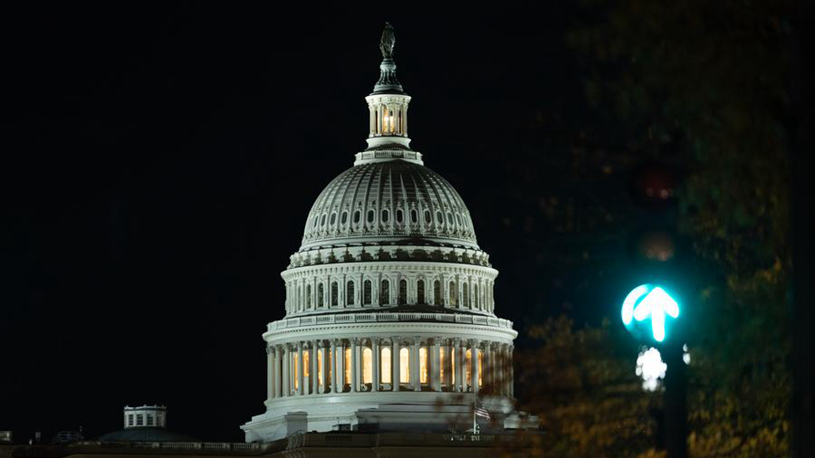WASHINGTON, Nov 14 (NNN-XINHUA) – The record-breaking U.S. federal government shutdown ends, after the congressional approval of a spending package on Wednesday. However, as bipartisan power struggles show no sign of alleviating, the recurrence of this shutdown remains highly possible within just two months.
The U.S. House of Representatives voted 222-209 in favour of the spending package on Wednesday night, two days after the Senate passed it 60-40. The legislation was later signed into law by President Donald Trump.
However, the package only temporarily and partially resolves the political dilemma paralysing Washington for the past 43 days. It funds most federal agencies at current levels through Jan 30, but covers only three of the 12 annual appropriations bills that Congress must pass each year.
If both parties fail to reach an agreement on the nine remaining bills, the U.S. government could be trapped in another shutdown in just over two months.
In fact, the two parties did not stop trading blame, even with the reopening of the federal agencies in the near future.
The Democrats cost the country 1.5 trillion U.S. dollars “with their recent antics of viciously closing our Country, while at the same time putting many at risk – and they should pay a fair price,” Trump said in a post on Truth Social.
He added, at the bill signing ceremony that, the total effect will take weeks and probably months to calculate accurately, including the serious harm to the economy, people and families.
White House Press Secretary, Karoline Leavitt, also accused the Democrats of leaving Federal Reserve policymakers “flying blind at a critical period,” as last month’s key economic data on inflation and job market may never be published as a result of the shutdown.
Some Democrats voiced discontent with the package, particularly over the uncertainty surrounding health care benefits – one of their top priorities. Senate Majority Leader, John Thune, promised Democrats only a vote on the issue rather than an assurance.
Bernie Sanders, a Vermont independent, who caucuses with Democrats, called the deal a “disaster,” saying that, Democrats gained almost nothing more than a symbolic vote. Illinois Governor, J.B. Pritzker, wrote on X that, this was not a deal but an “empty promise.”
On Oct 1, the U.S. Senate failed to pass a new short-term funding bill, before government funds ran out. It forced the closure of federal agencies and surpassed the previous 35-day record set during the 2018-2019 shutdown.
Political analysts pointed out that, both Democrats and Republicans simply took advantage of the contentious issues for political purposes, amid intense power struggles, a recurring feature of U.S. politics. While they seek to please their voters, ahead of next year’s mid-term elections, in an increasingly fragmented society, marked by a shrinking American middle class, political campaigns are likely to become more polarised, endangering social stability and public welfare.
Flight delays and cancellations, suspension of food aid to vulnerable groups, and the halting of payment for government employees were the areas mostly affected by the latest shutdown.
A Reuters/Ipsos poll released on Wednesday found that 50 percent of Americans blamed Republicans for the shutdown, while 47 percent blamed Democrats, suggesting that, neither party can fairly pick the other as a scapegoat.
Government shutdowns have occurred in American history. The first partial shutdown took place in 1976, under President Gerald Ford, amid a budget dispute. As many as 15 federal government shutdowns have been recorded since 1980, when it was clarified that federal agencies could not spend funds without appropriations, according to Congressional data.– NNN-XINHUA






